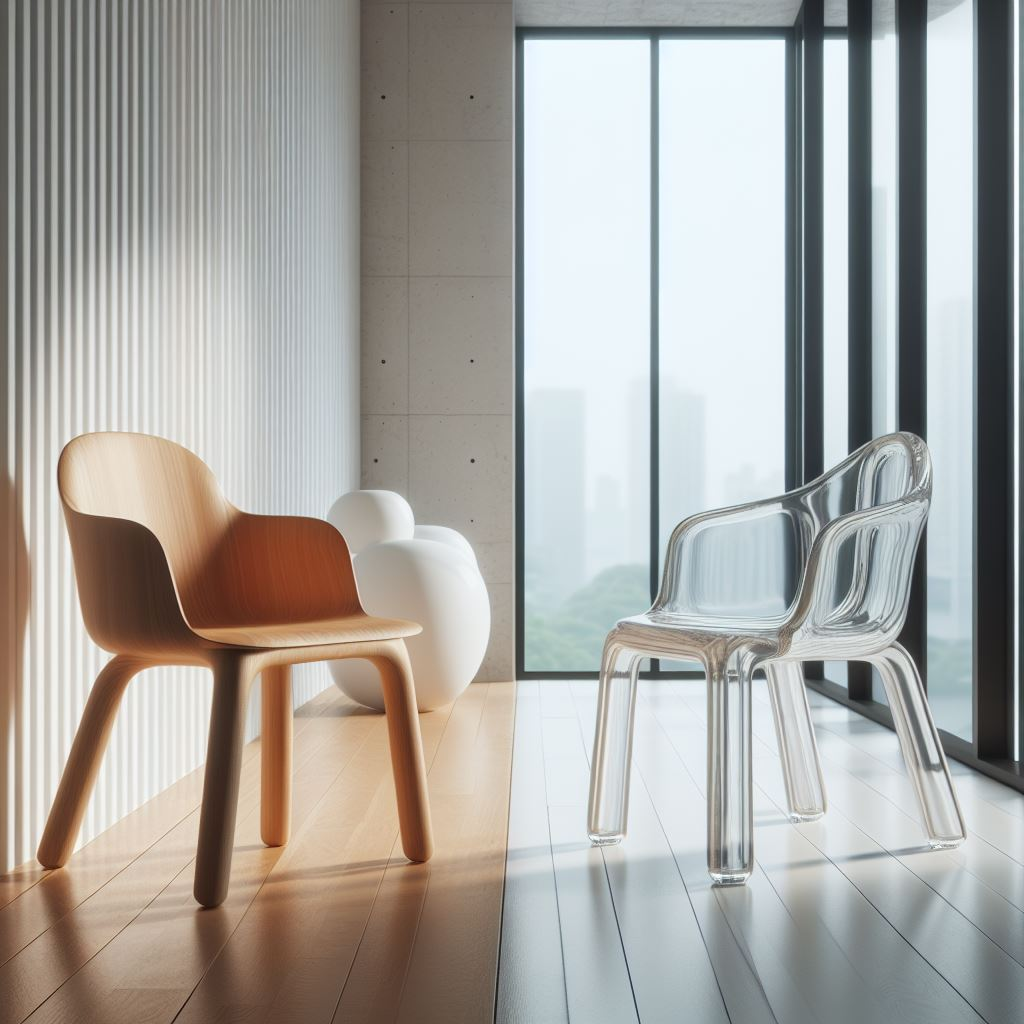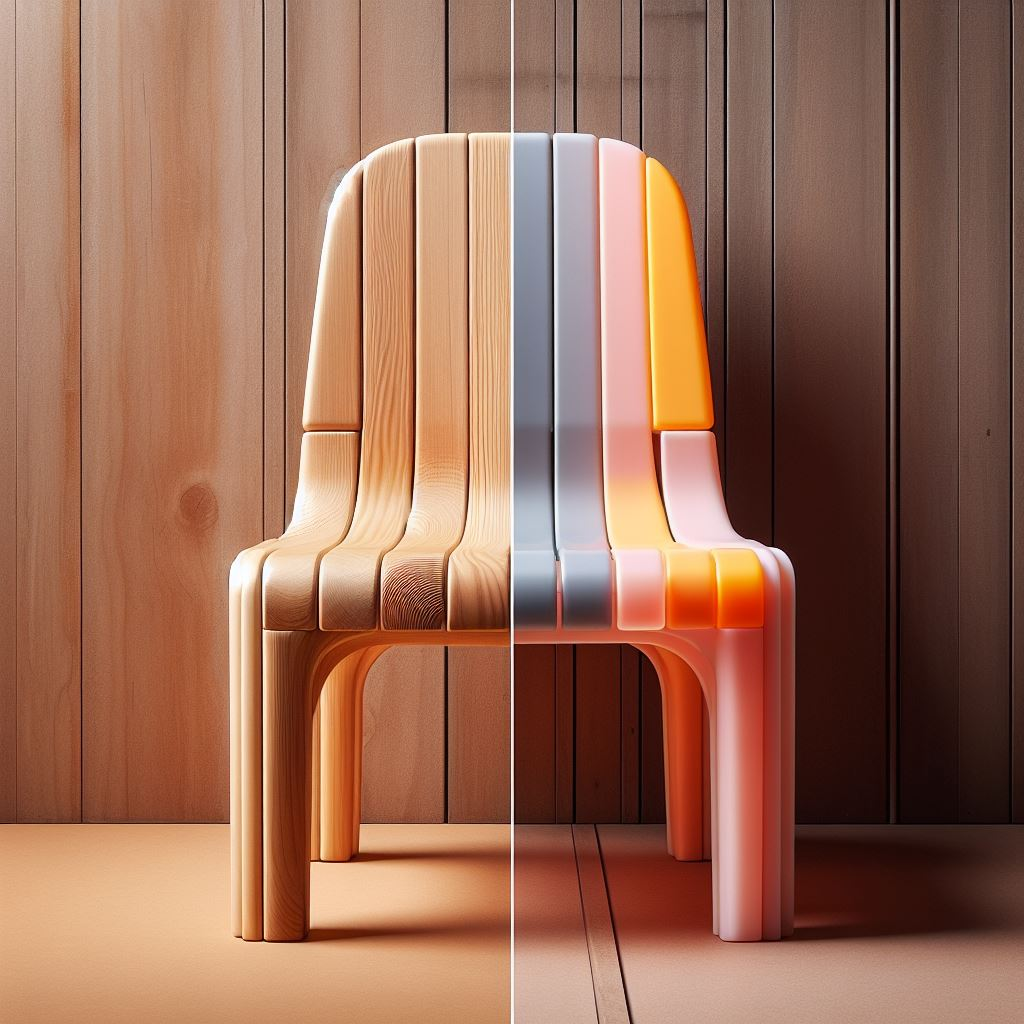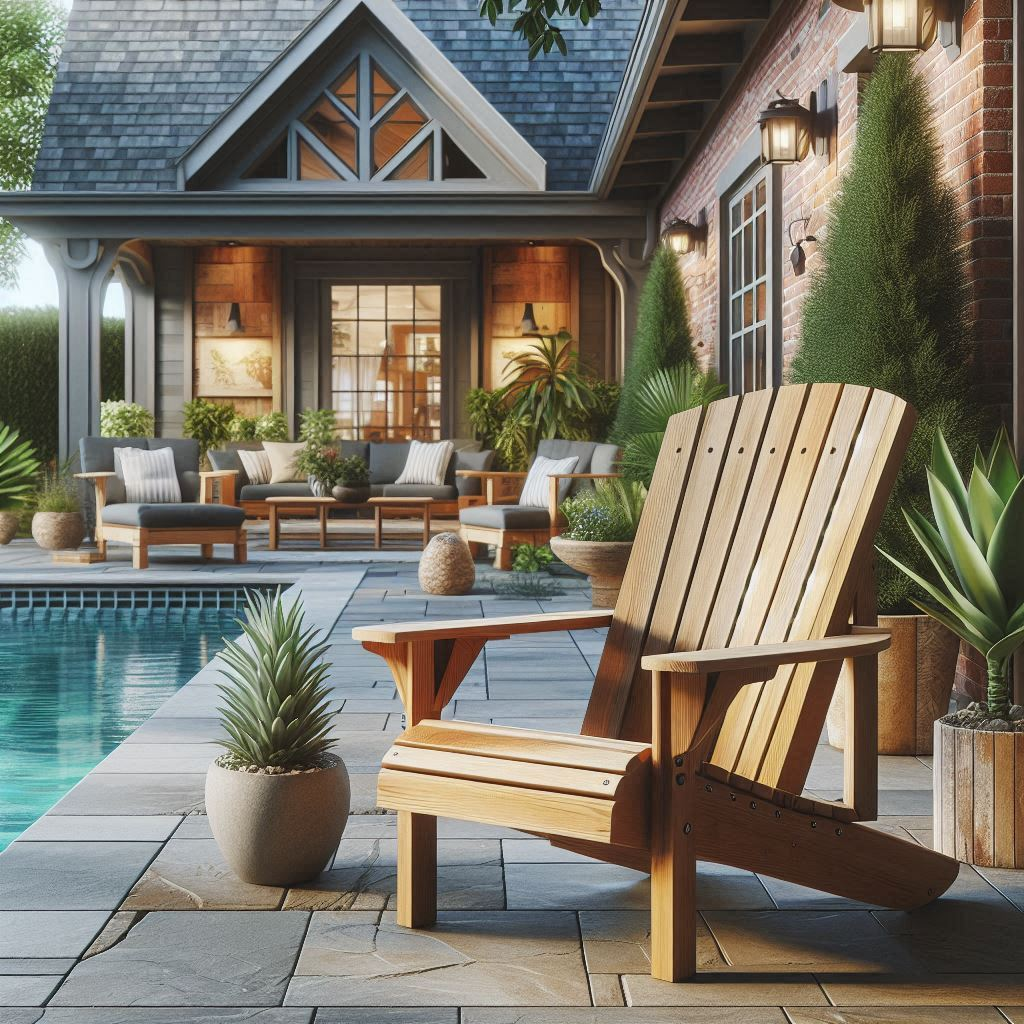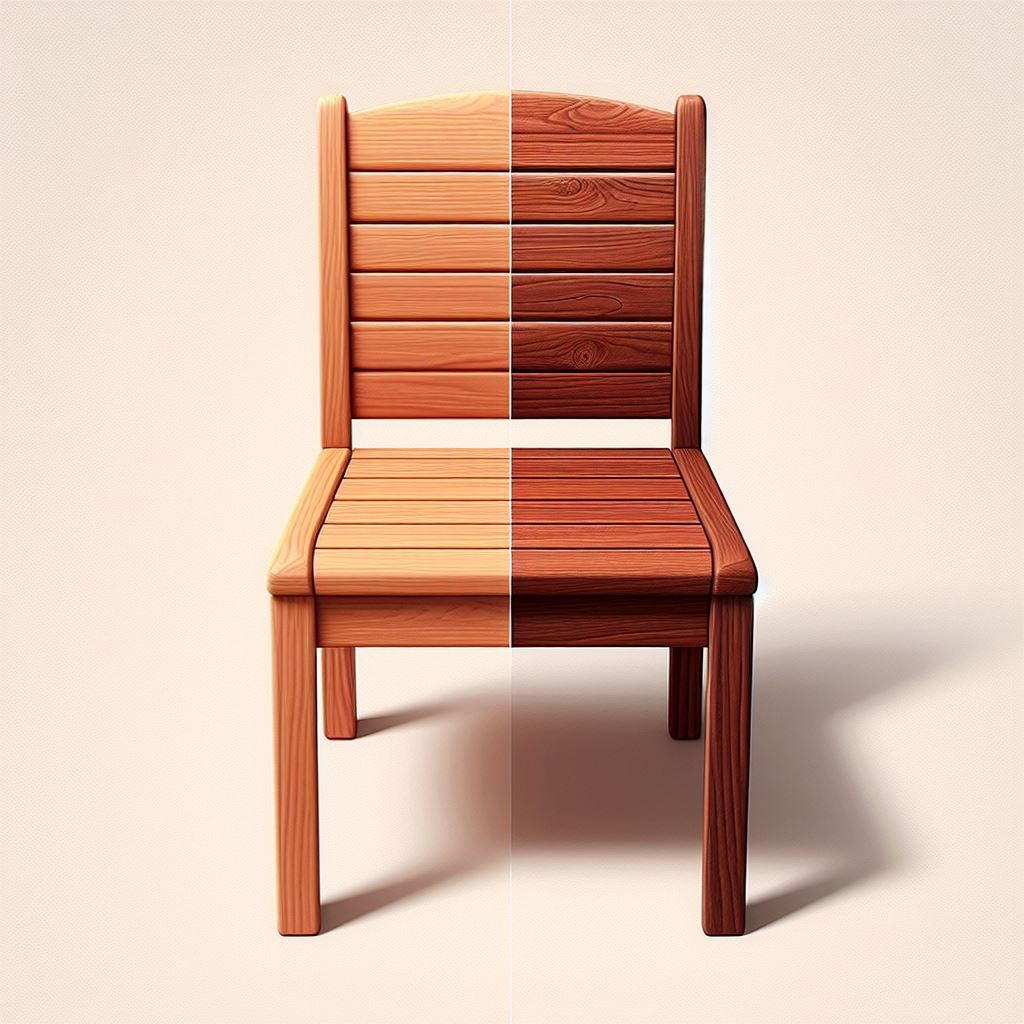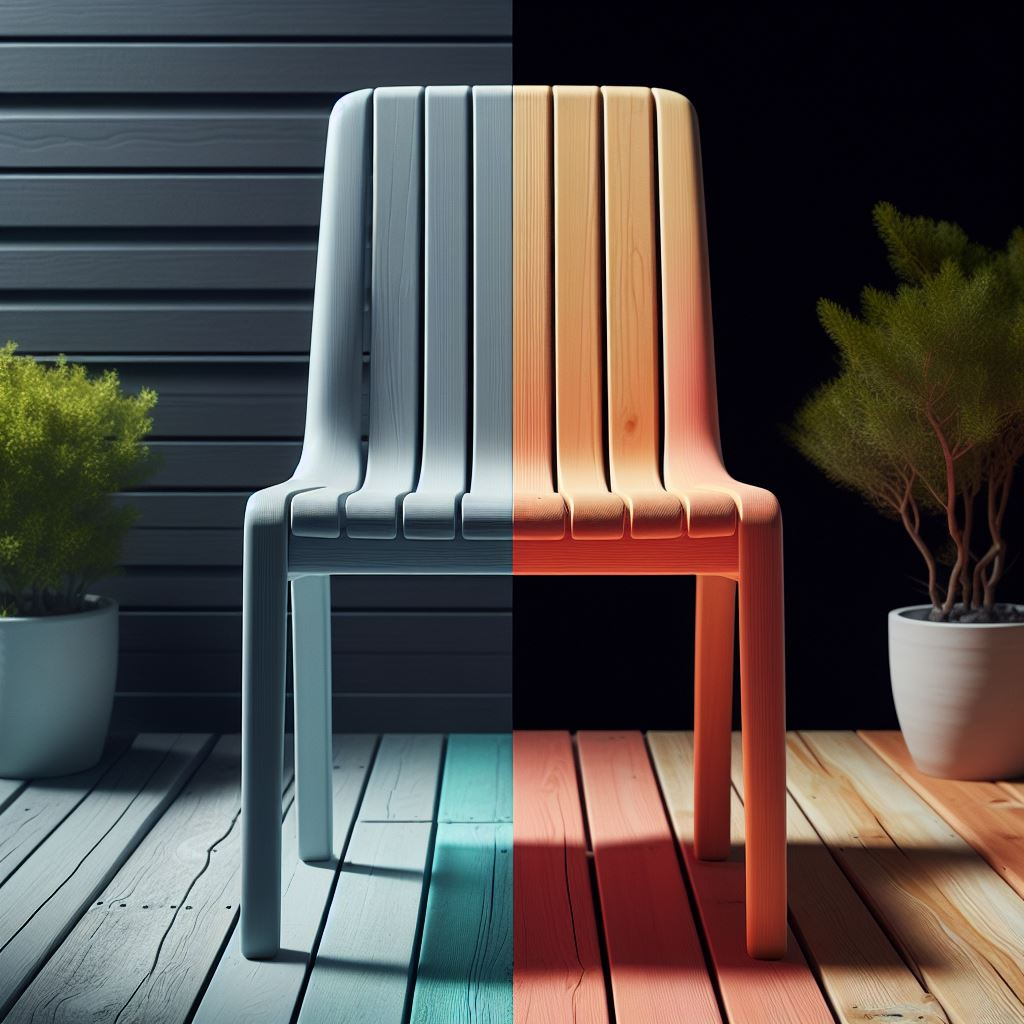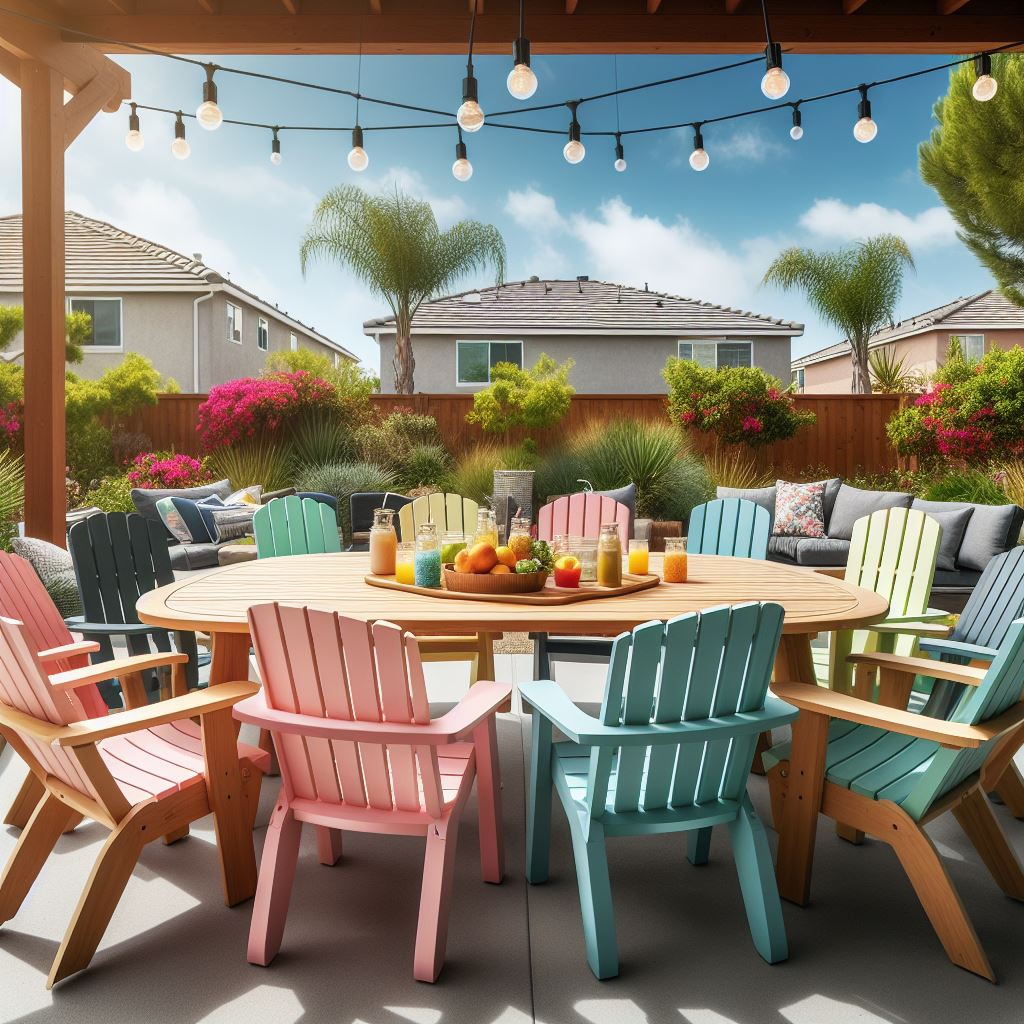When selecting outdoor furniture, understanding the differences between materials like Polywood and High Impact Polystyrene (HIPS) is crucial for making an informed decision. This guide provides a detailed comparison of Polywood vs. HIPS outdoor furniture, highlighting their key features, benefits, and drawbacks to help you choose the best material for your patio, garden, or backyard space.
Here’s a comparison table between Polywood and HIPS:
| Feature | Polywood | HIPS |
|---|---|---|
| Composition | Composite material made from recycled plastics and wood fibers | High Impact Polystyrene plastic |
| Eco-Friendliness | Highly eco-friendly, made from recycled materials like milk jugs and detergent bottles | Less eco-friendly, not typically made from recycled materials |
| Weather Resistance | Excellent, withstands extreme weather conditions including sun, rain, and snow | Excellent, designed to endure harsh weather without losing integrity |
| UV Stability | High, resistant to UV rays, does not fade or degrade over time | High, retains vibrant appearance even with prolonged sun exposure |
| Maintenance | Very low, requires only occasional cleaning with soap and water | Very low, easy to clean with mild soap and water |
| Durability | Extremely durable, resistant to cracking, peeling, rotting, and pests | Durable, resistant to impact, moisture, and does not warp or swell |
| Weight | Heavier, adds stability but less portable | Lightweight, easy to move and rearrange |
| Cost | Higher initial cost, but long-lasting and low maintenance | Generally more affordable, but may require more frequent replacement |
| Aesthetic | Mimics the look of wood, available in various colors and finishes | Can mimic wood appearance, but may lack the authentic feel of natural wood |
| Pest Resistance | Resistant to pests and insects | Not typically a concern, but less resistant compared to Polywood |
| Environmental Impact | Positive, reduces plastic waste and promotes sustainability | Higher carbon footprint due to energy-intensive production process |
| Examples of Use | Adirondack chairs, dining sets, benches, and loungers | Side tables, garden benches, coffee tables, and chairs |
| Heat Resistance | High, does not warp or melt under high temperatures | Moderate, can withstand heat but may deform under extreme temperatures |
| Color Options | Wide range of colors and finishes available | Limited color options, primarily solid colors |
| Texture | Textured surface that mimics natural wood grain | Smooth surface, may lack the tactile feel of wood grain |
| Assembly | Typically comes pre-assembled or with easy assembly instructions | Often requires assembly, but generally straightforward |
| Longevity | Long-lasting, can endure for decades with minimal maintenance | Long-lasting, but may require more frequent replacement compared to Polywood |
| Recyclability | Fully recyclable at the end of its life cycle | Partially recyclable, but less commonly recycled compared to Polywood |
Polywood: The Eco-Friendly, Durable Choice for Outdoor Furniture
Eco-Friendly Composition and Sustainability: Polywood is a composite material made from recycled plastics, often combined with wood fibers, which significantly reduces plastic waste and promotes environmental sustainability. If you’re looking for eco-friendly patio furniture, Polywood is an excellent choice for reducing your carbon footprint.
Weather Resistance and UV Protection: Polywood outdoor furniture is specifically designed to withstand various weather conditions, including intense sunlight, heavy rain, and snow. Its superior UV resistance prevents fading, warping, and degradation over time, allowing Polywood furniture to maintain its appearance and structural integrity, making it ideal for long-term outdoor use.
Low Maintenance Requirements: One of Polywood’s standout features is its low maintenance. Unlike traditional wooden furniture, which requires regular staining, sealing, or painting, Polywood needs only occasional cleaning with mild soap and water. This makes it an ideal choice for those looking for easy-to-care-for outdoor furniture that still looks great year after year.
Exceptional Durability: Polywood is known for its impressive durability and resistance to cracking, peeling, and rotting, even under harsh weather conditions. This ensures that your outdoor investment will last for many years. Additionally, Polywood is resistant to pests and insects, which are common issues with natural wood, making it a durable, long-lasting option for your patio or garden.
Weight and Cost Considerations: Polywood furniture tends to be heavier than other materials, which can be a drawback if you need portable outdoor furniture that’s easy to move. Furthermore, Polywood can be more expensive compared to traditional wood or other plastic materials. However, its longevity, sustainability, and low maintenance often justify the higher initial cost for many buyers.
High Impact Polystyrene (HIPS): The Lightweight, Resilient Option for Outdoor Furniture
Strong Composition with Less Environmental Impact: High Impact Polystyrene (HIPS) is a type of plastic known for its strength, impact resistance, and lightweight properties. However, unlike Polywood, HIPS is typically not made from recycled materials, which may be a concern for those who prioritize eco-friendly furniture options.
Outstanding Weather Resistance and Moisture Protection: HIPS is engineered to endure harsh weather conditions without losing its integrity or color. It resists moisture, preventing warping, swelling, or cracking, making it perfect for outdoor use, especially in humid or rainy climates.
Minimal Maintenance Needs: Similar to Polywood, HIPS outdoor furniture requires minimal upkeep. A quick clean with mild soap and water is sufficient to keep it looking fresh and new. Its smooth surface is easy to wipe down, which helps prevent the buildup of dirt, grime, and stains, making it a practical choice for busy households.
Excellent Fade Resistance and UV Stability: HIPS offers superb UV stability, retaining its vibrant appearance even after prolonged exposure to direct sunlight. This means your outdoor furniture will maintain its color and look great for years, with no need for refinishing or touch-ups.
Lightweight Design and Aesthetic Versatility: One of the significant advantages of HIPS is its lightweight nature, making it easy to move and rearrange. This is especially beneficial for those who frequently change their outdoor setups. While HIPS can be designed to mimic the appearance of wood, it may not have the same authentic feel, which could be a drawback for those who prefer the natural look of wooden furniture.
Conclusion: Polywood vs. HIPS—Which is the Best Outdoor Furniture Material?
Polywood: Polywood is ideal for those who prioritize sustainability, durability, and low maintenance. Its eco-friendly composition, weather resistance, and robust build make it an excellent investment for long-term outdoor use, despite its higher cost and heavier weight.
HIPS: High Impact Polystyrene (HIPS) is perfect for those seeking lightweight, versatile, and low-maintenance outdoor furniture. It offers excellent weather resistance, UV stability, and ease of movement, but may fall short for those looking for sustainable materials or the authentic feel of wood.
Key Takeaways for Choosing Outdoor Furniture: When deciding between Polywood and HIPS, consider what matters most to you—whether it’s sustainability, durability, low maintenance, weight, or cost. Both materials offer high-quality options that can elevate your outdoor living space, providing style, comfort, and functionality for years to come.
Use these insights to make a confident choice in your search for the best outdoor furniture that fits your lifestyle, design preferences, and environmental values.

